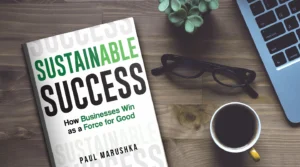Understanding the EUDR: The Latest Updates from EU Regulators
Get the latest on the EU Deforestation Regulation with insights into EUDR compliance, covered products & packaging requirements ahead of 2025 enforcement.
The EU Deforestation Regulation (EUDR) is just twelve months away from enforcement, compelling companies to put systems in place that ensure they comply with the law. The consequences for noncompliance are steep: companies that cannot demonstrate their products are deforestation-free will be unable to sell their goods within the European Union.
The EUDR has created confusion among companies because its requirements for demonstrating deforestation-free goods are stringent and complex. However, the release of new FAQ documentation in December 2023 helps clarify several areas of the law, enabling organizations to better prepare to comply. Here, we summarizes the key aspects of the regulation and its recent clarifications:
Which products are covered by EUDR?
The regulation covers seven commodities: soy, palm, cocoa, coffee, beef, rubber, and wood. However, it’s crucial to understand the nuances, as not all products that contain these commodities are covered. For example, soy and palm oil are only subject to the law in their raw form. In contrast, certain products that contain cocoa – such as chocolate – are regulated, as are tires that contain natural rubber. Annex I of the regulation provides a full list of affected product CN codes.
Who is required to comply?
Any entity involved in placing relevant products in the EU market or exporting them from the EU is subject to EUDR. This includes a wide range of businesses, from direct suppliers to those who transform any covered product into another, such as turning rubber into tires. A broad understanding of the supply chain impact is crucial for compliance.
What do regulated entities need to do?
To be EUDR compliant, companies must demonstrate that their products have not contributed to deforestation of land after 2020. To do so, they need to take the following three steps:
- Collect information that identifies the origin of their products,
- Assess the risk of deforestation impact associated with their products, and
- If there is a risk, demonstrate that they have mitigated the risk until it is negligible.
If commodities are sourced entirely from areas classified as low risk, then the diligence obligations are reduced. However, providing origin information remains mandatory for all products, whether from high or low risk regions.
Data Requirements of EUDR
Under the regulation, companies must provide geographic coordinates of the origin of the commodities found in their products. This can be quite challenging given the complexity of global supply chains, but recent information provided by the EU regulators provides some additional clarity.
For larger plots of land (over four hectares), specific coordinates of its outline are required, while smaller plots can be identified with a single GPS point. Each plot must be separately documented, meaning that providing a single outline of land which includes multiple plots is not sufficient. However, additional plots that do not include material in the shipped batch can be included in the information submitted to regulators, so long as all plots provided were not deforested after 2020.
Additionally, for products like beef, information about all the land on which the cows were raised throughout their lifetime is required. This mandate for such specific geographic information poses significant challenges, pushing companies toward technological solutions to collect and manage this data from their supply chains.
Understanding the Role of Certified and Recycled Materials
The EUDR has different stipulations regarding certified and recycled materials, which can be confusing to navigate. With various types of certifications having different standings under the regulation, and recycled materials being treated uniquely, understanding these aspects is crucial. Here’s a breakdown to simplify understanding:
- Certified Materials: Not all certifications are equal under EUDR. For instance, mass balance certification fails to meet compliance standards due to its inability to precisely trace commodities back to their origin, while certifications like segregated and identity preserved do qualify. These certifications assure that the commodities are traceable back to their source, thus aligning with the law’s stringent diligence and risk mitigation requirements. However, it’s crucial to note that even with these certifications, companies are still obligated to provide the same detailed geographic information about the origins of their commodities.
- Recycled Materials: The regulators have also provided clarification on the approach for recycled materials. Products composed of 100% recycled material are exempt from the requirement to provide origin information. This exemption acknowledges the role of recycling in promoting sustainability and reducing deforestation impacts, as well as the inherent challenge of identifying origins of recycled materials. However, if the recycled content is less than 100%, the standard EUDR requirements apply.
Navigating the Complexities of Wood Fiber-Based Packaging Under EUDR
The regulation’s approach to wood fiber-based packaging presents another layer of complexity for businesses. Whether it’s primary packaging that’s part of the final product, transport packaging used solely for shipment, or cases where the packaging material is the product itself, understanding these distinctions is essential for ensuring your processes are fully compliant.
- Primary Packaging: If wood fiber-based packaging is an integral part of the final product – commonly known as primary packaging – it falls under the purview of EUDR. This means companies must comply with the same stringent requirements as other regulated products, ensuring that the packaging material is deforestation-free and adheres to the guidelines.
- Transport Packaging: Packaging that is used solely for the purpose of transporting the product and is not included in the final sale does not need to adhere to EUDR regulations. This distinction recognizes that such packaging plays a different role in the product lifecycle and its environmental impact.
- Packaging as a Product: In cases where the product itself is a packaging material, EUDR compliance is mandatory. This includes scenarios where companies produce packaging materials that are then used by other businesses or consumers.
Identifying Low-Risk Geographies
The regulation’s approach to wood fiber-based packaging presents another layer of complexity for businesses. Whether it’s primary packaging that’s part of the final product, transport packaging used solely for shipment, or cases where the packaging material is the product itself, understanding these distinctions is essential for ensuring your processes are fully compliant.
The EU Deforestation Regulation mandates a risk-based approach to sourcing commodities, distinguishing between high and low-risk regions. As of now, the European Union has not released the official list of these geographies, but it is expected to do so before January 2025. This list will be a critical tool for businesses, as it will encompass not only entire countries but also sub-national regions, offering a nuanced view of risk based on specific areas within a country.
Having a clear understanding of which areas are considered low risk will greatly assist businesses in streamlining their due diligence processes. For commodities sourced from low-risk areas, the EUDR allows for simplified due diligence obligations. This means that identifying origins of regulated commodities is a necessary step in the process.
Start Preparing Now
The EU Deforestation Regulation introduces significant data and information requirements for businesses, making it crucial to start preparing early. Establishing robust systems for data collection is essential. Companies are required to gather detailed information from suppliers for each batch of product imported into the EU, including the geographic coordinates of product origins. But it’s not just about data collection; it’s about embedding sustainable practices into your supply chain. The first step that companies need to take is to identify which portion of their supply is at risk for noncompliance, and either determine that risk is negligible or shift supply chains to avoid risky supply. This needs to be done well in advance of January 2025, so that there is enough time to secure compliant supply chains.
Understanding and mitigating the risk of deforestation is paramount. This involves delving into supplier practices and policies, examining certifications, evaluating recycled content, and maintaining documentation covering these aspects. Early engagement with suppliers is also key, as it facilitates effective data collection and fosters a collaborative environment for sustainable practices.
How Sphera Can Help
For over a decade, Sphera has been working with businesses to navigate the complexities of supply chain origins and deforestation risks, helping them meet their deforestation-free goals for palm, soy, beef, and timber, and comply with the EU Timber Regulation (the law that preceded the EUDR and focused only on timber products). Our platform is designed to ease the burden of data collection and management by streamlining the process, ensuring accuracy and compliance-readiness. Recognizing that regulations and sustainability practices are ever-evolving, Sphera maintains ongoing communication with leading consultants and non-profit organizations to optimize best practices related to emerging regulations like the EU Deforestation Regulation.
Ready to enhance your supply chain reporting for EUDR compliance? Get in touch today.
SupplyShift was acquired by Sphera in January 2024. This content originally appeared on the SupplyShift website and was slightly modified for sphera.com.






